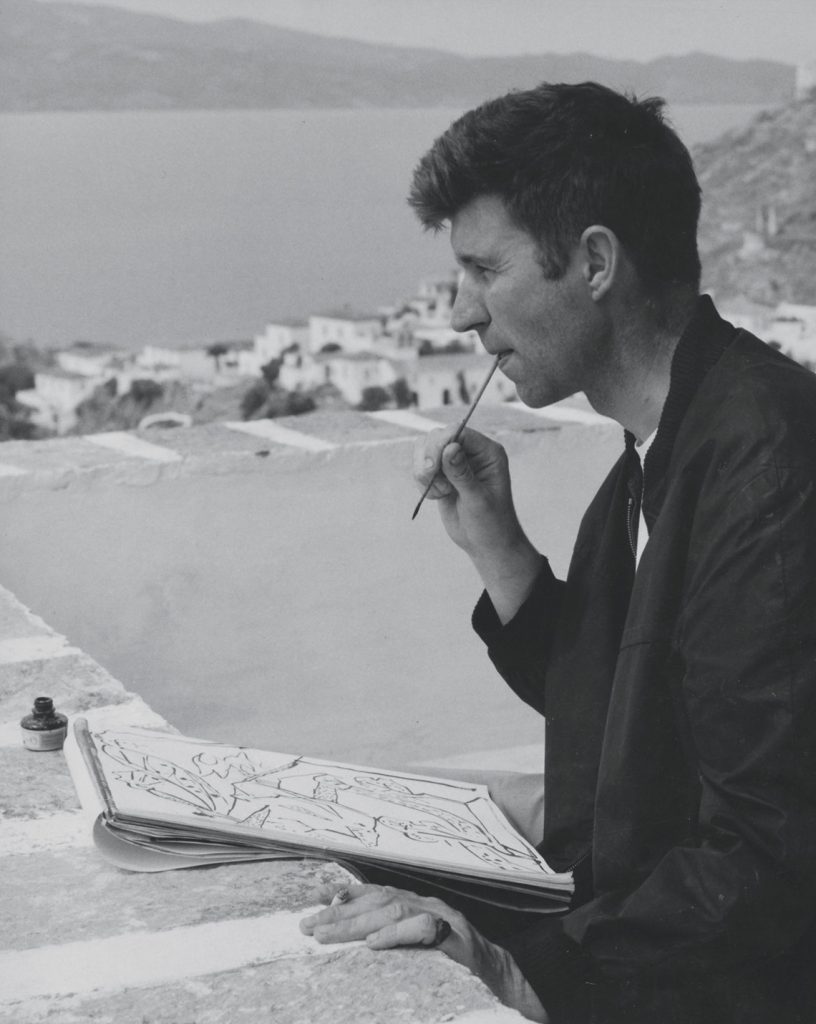people » John Craxton
John Craxton (1922 – 2009) painter and designer
John Craxton was born in London in 1922 into a well-known musical family. His father, Harold Craxton, was a composer and, for over 40 years, a Professor at the Royal Academy of Music. Janet Craxton, John’s sister, was a distinguished oboeist. At the age of 17, John Craxton went to Paris to study art, being too young for the Chelsea School of Art. When war started, he continued his studies in various London colleges. He mounted solo exhibitions in 1942 and 1944 and in 1943 toured Pembrokeshire with his contemporary Graham Sutherland, by whom he was clearly influenced. Other influences around this time were the Romantic painter Samuel Palmer (1805 – 1881) and his close friend Lucian Freud.
After the war Craxton began to travel widely, but it was Greece, and Crete specifically, that particularly attracted him and where he spent increasing amounts of time. From around 1970 until his death in 2009, he shared his life between a home in Crete and London.
Craxton was attracted to the light and colour of Greece, and to what he saw as an arcadian life, both human and natural. His art became suffused with the textures, personalities and the floral and geological forms of Greece, all rendered with striking clarity and colour. As time went on, his often very large canvases showed a tendency to semi-abstraction, but an abstraction always rooted in the flowers, trees, landscapes and pastoral life of Greece, and at times showing the influence of Byzantine iconography.
His designs for the ballet Daphnis and Chlöe in 1951 are at the start of his Grecian odyssey, and show clearly the direction his art was taking, away from England and Wales, and into an imagined Hellenic paradise.
Over the years Craxton gained increasing recognition, both in Britain and in his adopted Greece. He had major retrospectives at the Whitechapel Gallery in 1967 and, two years after his death, at Tate Britain in 2011. John Craxton was elected Royal Academician in 1993.

